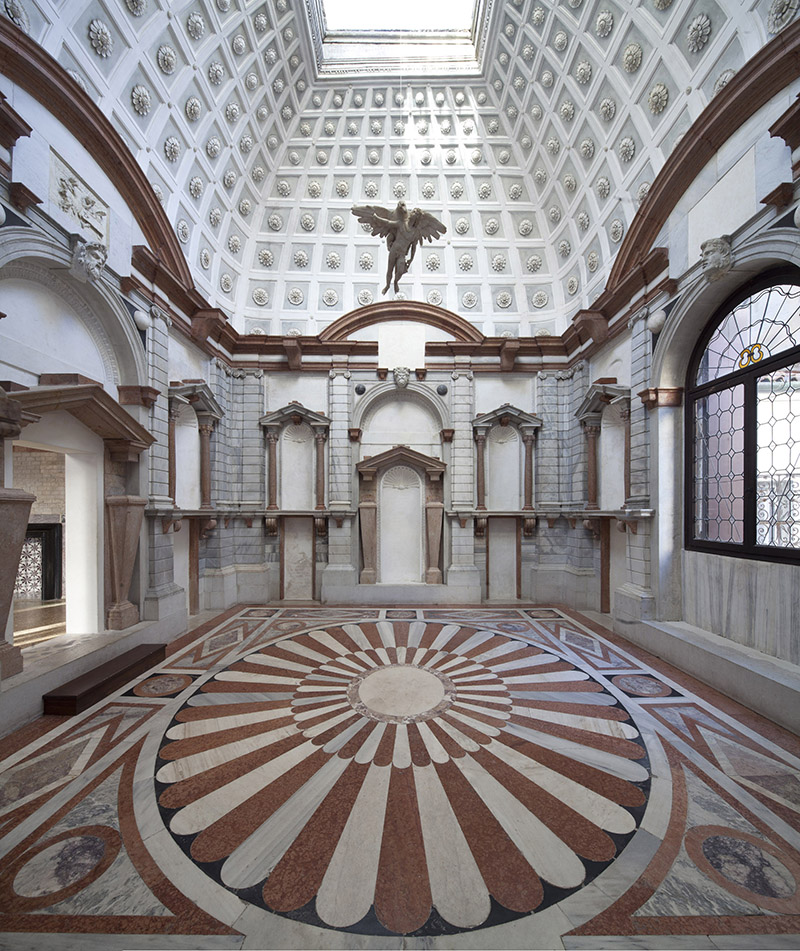
The vault of the Tribuna with Ganymede. Photo courtesy Museo di Palazzo Grimani.
MUSEO DI PALAZZO GRIMANI
The exhibition venue selected for Beverly Barkat’s exhibition Evocative Surfaces is that of the Museo di Palazzo Grimani with its unique architecture and longstanding history. The Museum takes its name after a Venetian family Grimani, who rose to their greatest prominence in the 16th-century. The building was acquired by Antonio Grimani, the future doge, in 1500, with the intention of turning it into his family home. On the advice of the celebrated architects such as Jacopo Sansovino, Sebastiano Serlio and Andrea Palladio, Antonio’s grandsons altered the building and gave it a classical stamp.
In 1981 Museo di Palazzo Grimani was purchased by the State, and in 2001 the State Museums in Venice were given the responsibility for its management. After many years of silence Museo di Palazzo Grimani reopened on the 20th December 2008 as a museum. In recent years the spaces on the second floor piano nobile of the Museo di Palazzo Grimani , previously closed to the public, went through extensive refurbishing. Museum decided to broaden out into various cultural ventures and international collaborations. Its first foray into contemporary art occurred in 2013 and later in 2015, with two large international projects, more precisely collateral events by the Japanese artist Ritsue Mishima and the Frontiers Reimagined by the Tagore Foundation International.
MUSEO DI PALAZZO GRIMANI
The exhibition venue selected for Beverly Barkat’s exhibition Evocative Surfaces is that of the Museo di Palazzo Grimani with its unique architecture and longstanding history. The Museum takes its name after a Venetian family Grimani, who rose to their greatest prominence in the 16th-century. The building was acquired by Antonio Grimani, the future doge, in 1500, with the intention of turning it into his family home. On the advice of the celebrated architects such as Jacopo Sansovino, Sebastiano Serlio and Andrea Palladio, Antonio’s grandsons altered the building and gave it a classical stamp.
In 1981 Museo di Palazzo Grimani was purchased by the State, and in 2001 the State Museums in Venice were given the responsibility for its management. After many years of silence Museo di Palazzo Grimani reopened on the 20th December 2008 as a museum. In recent years the spaces on the second floor piano nobile of the Museo di Palazzo Grimani , previously closed to the public, went through extensive refurbishing. Museum decided to broaden out into various cultural ventures and international collaborations. Its first foray into contemporary art occurred in 2013 and later in 2015, with two large international projects, more precisely collateral events by the Japanese artist Ritsue Mishima and the Frontiers Reimagined by the Tagore Foundation International.